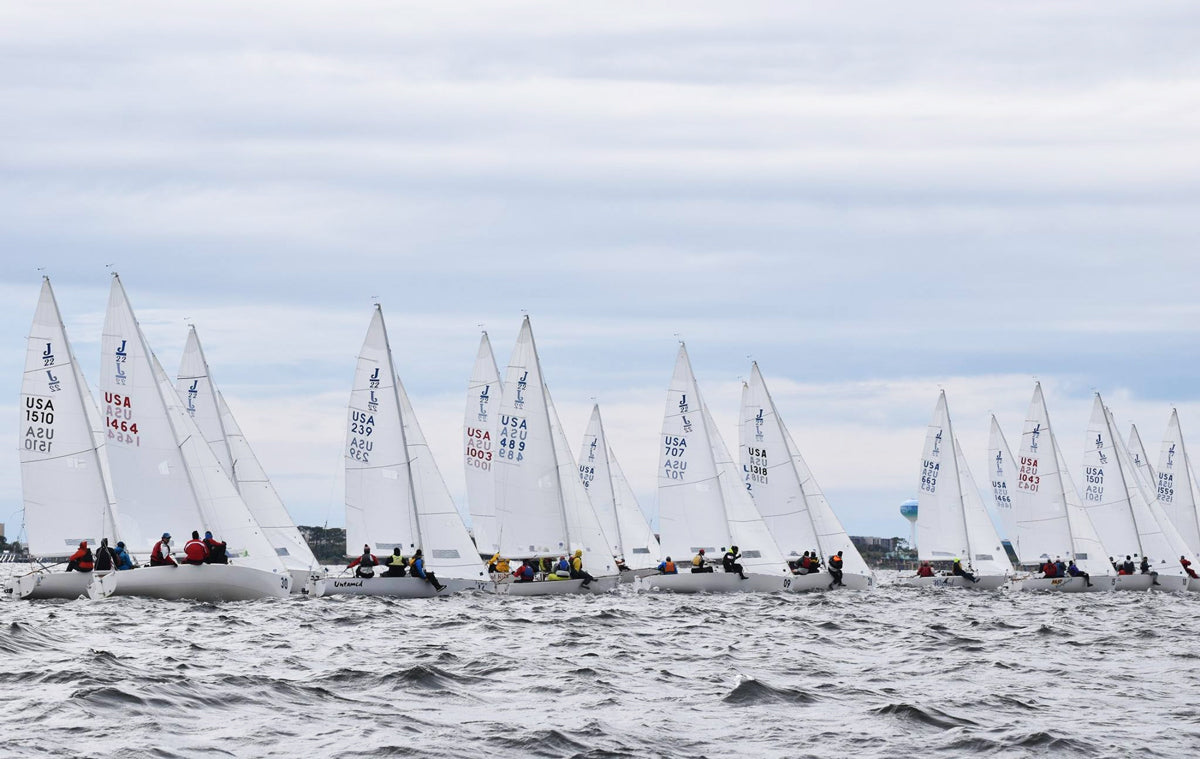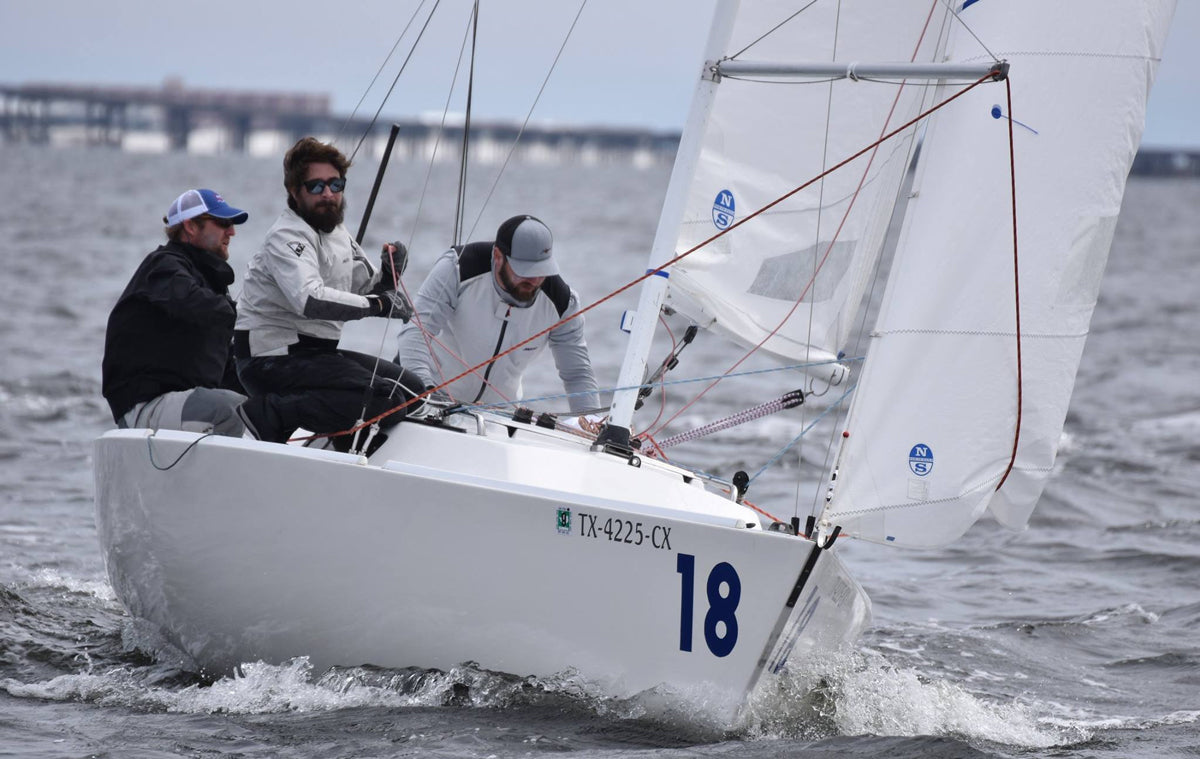MAKING THE SWITCH
MAKING THE SWITCH
New J/22 Client Casey Lambert Explains What Made The Difference

One Design expert Mike Marshall interviews Casey Lambert after the J/22 Midwinters in Florida earlier this month. Casey recently switched to North Sails, and his 3rd place performance at the Midwinters caught Mike’s attention. Learn more from Mike’s Q & A.
Casey, you recently switched to North Sails and finished 3rd at the J/22 Midwinters. How did you go about setting the rig up for the new sails? What tuning tips would you have for others switching? What did you use for your base setting?
We initially used the North Sails J/22 Tuning Guide. The guide recommended starting with 26 on the uppers and 7 on the lowers. With this setting, we saw no sag, so the lowers were eased until we could see 1/2″ of sag. As a final result, we had 26 on the uppers with no reading on the lowers, 4-5 inches side-to-side measured at the dock. For any one switching to North Sails, I would start with the tuning guide to get a solid starting point, but don’t be afraid to make changes as all boats are a little bit different.
If you had to sum up the key characteristics of the sails when you thought you were going fast, what would they be?
I always try to keep the flow in the main even with tell tales flowing at all times. With that being said, I found the traveler had a lot more to offer than with my last sails. The jib was a bit more work, but by the end of the regatta we found that moving the car back and tightening the luff (no scallops) gave us the best performance with the conditions given.

You mentioned that you changed your forestay length for the North sails. What made you make that change and how much did you changed it? What is the length now?
After speaking with you we started at 4′ 11-3/4″. After sailing the boat twice in 0 to 5 knots with no other boats, we made some adjustments to give me a little bit of leeward helm. After sailing the boat in the practice race with a little more breeze I knew we had a problem. The boat had a huge weather helm forcing me to use the rudder like an emergency brake to keep the boat from rounding up. After discussion with Evan and Jesse we decided to take 5 turns out of the head stay (not a minor adjustment). We went into day one ready to make changes but we had speed and point, so we ran with it. We have not made a new measurement since the last changes.
After using the sails for four days now, what are the main differences that you have seen in the way that you trim the sails from your previous set? Mainsheet, backstay, jib car?
Mainsail – In the past, unless I had a crew sitting in, the traveler never left center. I found that I set the mainsheet and played traveler in all breeze allowing the headstay to stay firm and not bounce around.
Jib – The jib really likes the car back and a tight luff which we always kept some scallops in the past.
Clearly, you are very fast in the J/22, so as for the boat in general, what are the tips you would give other class members that were key to your success so far this season?
- Jesse, Evan and myself have been sailing together for 15 plus years on many different boats. Our communication with each other is great! Over the years, we have traded spots on the J/22 which helps in changing gears. I trust them and they trust me.
- Never settle for the way your boat is set up. Don’t be afraid to make changes… you will never know if you don’t try.
- We never give up until the finish horn. When I find myself in the back I try to win my side of the race course. In large fleets one shift can send you from 20th to 1st in a matter of seconds.
At the 2019 J/22 Midwinters, North Sails designs were used by nine out of the top ten teams, including winners, Mike Marshall’s Bad News, Jeff Todd’s Hot Toddy in second and Casey Lambert’s Blackburn Marine finishing 3rd. Big congrats to Casey on his improvement!
Have questions about sails? Need expert advice? Contact Mike today.







